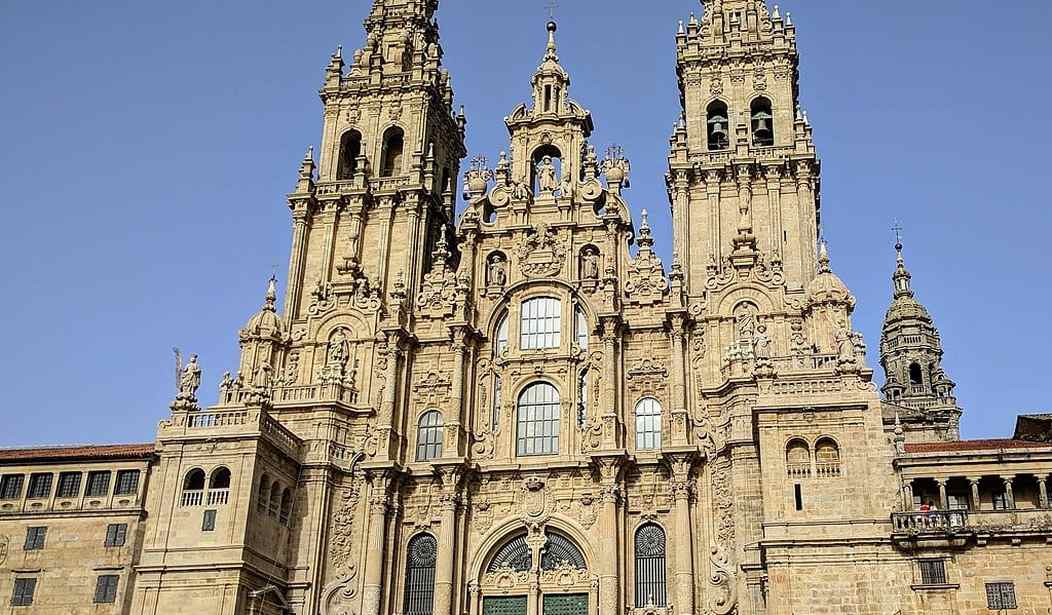The year 2021 could be a particularly “dangerous” year for Spain, thanks to Islamic State terrorists posing as migrants entering via Europe with “instructions” to attack, among other targets, churches in Spain. A report highlights several examples indicating an uptick in terrorist activities, adding, “the fact that we are immersed in a pandemic does not seem to stop the jihadist threats.”
One of the more recent threats concerns Santiago de Compostela, a Christian shrine in Galicia, in the furthest northwest of the peninsula. Several messages among Muslim migrants mentioning it as a potential target have been intercepted, placing the pilgrimage site on high alert and tightening restrictions concerning foreign visitors from hotspot nations, such as Syria, Libya, Iraq, and Afghanistan.
That Muslim terrorists are specifically focused on Santiago de Compostela is not surprising. Not only is it one of the most important Christian pilgrimage sites—and therefore an ideal target of the jihad—but the shrine (now cathedral) figures very prominently in the historic wars between Christians and Muslims in Spain.
Even the saint it is named after and whose body is said to rest there, James the Greater (son of Zebedee), figures in the wars of these times. Indeed, because he was widely believed to have appeared on a snow-white charger, slaughtering thousands of Muslims at the battle of Clavijo in 844, Spain’s patron saint has for centuries been better known as Santiago Matamoros—that is, “Saint James the Moor-Slayer” (“Moor” essentially being synonymous with “Muslim”).
Little wonder, past and present, Muslims have targeted Matamoros and his shrine. One of the most notable attacks occurred over a thousand years ago, in 997. Then, Muhammad bin Abi Amir, known as “Almanzor”—the Victorious—while carrying a Koran, “over which he meditated endlessly,” led a great jihad to the Christian north of Spain. He sacked, burned, and terrorized the region—destroying the churches so that “not a trace remained”—and ritually massacred or enslaved tens of thousands of Christians. He finally reached and sacked Santiago de Compostela in the furthest northwest quadrant. Because Almanzor held a “special grudge against this fighting saint,” he destroyed his shrine; its icons, statues, and crosses were “overthrown and mutilated”; and the church bells of Compostela were seized and carried on the backs of enslaved Christians to the Great Mosque of Cordoba, where they were transformed into lamps used to lighten the Muslim place of worship.
Prior to Almanzor’s arrival, the monks guarding the shrine hid the “Moor-Slayer” saint’s remains, which were returned and the edifice rebuilt. Moreover, the attack backfired; “news of the desecration of the sanctuary far from arousing fear and dismay, or causing disaffection, aroused extraordinary indignation and renewed fervor. The cause of James the Apostle became the cause of the whole of Christendom.” Soon the Reconquista would be launched in full effect. Nearly 240 years later—that is, 240 years of savage wars between Christians and Muslims—the Christians, under Ferdinand III of Castile (r. 1217–1252) conquered Cordoba, for centuries the capital of Muslim Spain.
The city “was cleansed of all filthiness of Muhammad,” writes a contemporary chronicler; its Great Mosque, which centuries earlier had been “built with the materials of demolished churches brought to Cordoba on the heads of Christian captives, thus exalting the true religion and trampling polytheism”—as a Muslim historian had once boasted—was reconsecrated as a church. Then, Ferdinand “ordered the cross to be put upon the chief tower [minaret] where the name of the false Muhammad was wont to be called upon and praised,” continues the Spanish chronicler. The sight of the crucifix atop the church-turned-mosque-turned-church again “caused confusion and ineffable lamentation among the Saracens and, on the contrary, ineffable joy to the Christians.”
Finally, Ferdinand—“the tyrant, the accursed one,” as he was known to Muslims—found and returned on the backs of Muslim captives the bells of St. James to his sanctuary in Compostela, where they remain.
While much of this history is all but forgotten in the West, by fixating on launching a terrorist attack on the shrine of the Muslim-Slaying saint, present-day Muslims ensure that the continuum between past and present remains alive and well. After all, and as Bernard Lewis once explained, “most Muslims, unlike most Americans, have an intense historical awareness and see current events in a much deeper and broader perspective than we normally do.” And they act on it.
Historical quotes in this article were excerpted from the author’s Sword and Scimitar: Fourteen Centuries of War between Islam and the West. Raymond Ibrahim is a Shillman Fellow at the David Horowitz Freedom Center, a Judith Rosen Friedman Fellow at the Middle East Forum, and a Distinguished Senior Fellow at the Gatestone Institute.










Join the conversation as a VIP Member